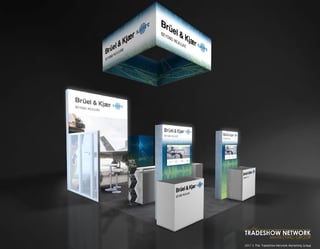The electronic logging device (ELD) rule – congressionally mandated as a part of MAP-21 – is intended to help create a safer work environment for drivers, and make it easier and faster to accurately track, manage, and share records of duty status (RODS) data. An ELD synchronizes with a vehicle engine to automatically record driving time, for easier, more accurate hours of service (HOS) recording.
The FMCSA states that its objective for imposing the ELD mandates is to considerably strengthen commercial truck drivers’ compliance with hours of service regulations. By doing this, their plan is to reduce the amount of driving fatigue that leads to unsafe roads. Aside from recording driving hours, the ELDs will monitor the driver’s location, miles, and even vehicle movement. This kind of technology in the transportation industry can be transformative and is definitely going to be a game changer for drivers everywhere.
What will it mean for Asset Based Carriers?
The mandate could result in a 7% loss of capacity in the for-hire carrier sector, with a 3.7% loss for the industry overall as some drivers no longer will be able to fudge their paper logbooks and therefore spend less time on the road. As a result, expect a 5-15% increase in spot rates, and “really a re-benchmarking of the industry.” The impact will be felt most acutely on one-day hauls of more than 450 miles.
ELD recorded times become most critical in the last driving hours of the day. Thus, the single day short-haul becomes the most vulnerable when anything; traffic, weather, or any other delay can and will have an impact on delivery success. ELD requirements will push trips to a second day causing appointments to be rescheduled. Worse, the carriers connecting reload will likely be missed. Carriers, to compensate for the potential disruption, will be raising layover, detention, and short-mile rates.
The electronic logging device, or ELD, mandate, set to go into effect Dec. 18, will also focus attention on companies that habitually make drivers wait long hours to load or unload freight. Motor Carriers that are ELD early adopters are becoming less tolerant and dropping shippers that slow down freight movement. Independent truckers, often owner-operators, also report sharing names of slowpoke shippers with dispatchers or freight brokers to avoid ever making a return visit.
Shippers already dealing with a freight hauling capacity crunch caused by rising demand and a driver shortage could avoid being dropped by reducing wait times. They could also avoid it by boosting detention pay, the fees that cover the time a trucker waits beyond the agreed-upon hours for the job. Those shippers could end up paying more or not being able to find carriers.
But higher detention fees won’t help drivers comply with existing hours-of-service restrictions the ELD mandate is meant to reinforce. Truckers must comply with a federal hours-of-service rule limiting driving to no more than 11 hours a day within a 14-hour workday. Drivers must then be off duty for 10 consecutive hours. Both carriers and truckers are concerned about long waits at loading docks extending driver hours beyond the federal work limits. Higher detention fees will offset the fewer revenue generating miles experienced from the slower shippers. Although big-box shippers are already looking at streamlining their loading and unloading processes, the overall industry will be slow to react. The worst offenders will likely have fees associated directly with their accounts.
There is one exception that will help preserve delivery times (but not lessen detention), the 100 air-mile radius exemption. A driver is exempt from maintaining the driver's daily log requirements of Section 395.8 if the driver operates within a 100 air-mile radius of the normal work reporting location and the driver returns to the work reporting location and is released from work within 12 consecutive hours. Thus, no log’s, no ELD.
How Should Shippers React? Adjust Expectations of Transit Times
With the ELD mandate in place, shippers may see an increase in the amount of time it takes to get a shipment from origin to destination, as Hours of Service (HOS) restrictions will be more effectively enforced. Drivers may find themselves sitting with a full load awaiting a reset to their HOS.
In addition, carriers and shippers alike must be sure their transit expectations align with legal driving hours. Asking drivers to exceed legal requirements could be considered driver coercion, according to the Federal Motor Carrier Safety Administration.
Rule of thumb: Drivers can drive 11 hours a day. This includes navigating parking lots, alleys, smaller city streets, secondary routes, and highways. Also to be included in their time are the obstacles to everyday driving like detours, accidents, and weather. Lastly, you can’t forget the human and mechanical limitations such as eating, taking breaks, and topping off vital truck fluids. It is safe to use an average of between 475 and 600 miles driving per day.
Earlier it was mentioned that same-day deliveries at or beyond the 450 miles become the most vulnerable to not making service. Here is a handy map to show you where that line is outside of Chicago…
Expect Price Increases
Immediately following the December 18, 2017 compliance date, freight capacity may shrink due to the number of carriers who either cannot, or will not, comply with the ELD mandate. Of course, when capacity shrinks, prices increase.
Streamline Operations to Maximize Driving Time
Shippers can help offset the capacity shortage brought on by the ELD mandate by utilizing best practices when working with carriers. Suggestions for streamlining operations in order to shorten the amount of time drivers spend on duty, but not driving, include:
- Reducing loading/unloading times
- Utilizing “drop & hook” vs. live loading
- Using flexible pickup and delivery times
- Creating safe, legal parking at pickup/delivery locations
Becoming a Shipper of Choice
Further efficiency of driver hours can be achieved when shippers create long-term, strategic partnerships with their carriers. According to a recent article by Supply Chain Brain, “Economic conditions are improving, and capacity is tightening, giving carriers the luxury of choosing those accounts that are most profitable.” Becoming a Shipper of Choice is about providing consistent freight, maintaining a flexible delivery window, creating positive conditions for drivers and working with the carrier to generate a more efficient network. Listed below, in no particular order, are some key traits often considered in shippers:
- Flexibility
- Attentiveness to Driver Hours
- Proactive Communication
- Driver Accommodation
- Load and Lane Consistency
- Expedited Payment Terms
Highlighted Q&A
- ELD and Hours of Service (HOS)
- The ELD final rule does not change any of the basic hours-of-service rules or exceptions. For more information regarding hours-of-service, visit FMCSA's Hours of Service
- Does the Electronic Logging Device (ELD) rule require real-time tracking of commercial motor vehicle (CMVs) with ELDs?
- Real-time tracking of CMVs is not required in the ELD rule. However, a motor carrier may use technology to track its CMVs in real time for business purposes. A motor carrier is free to use this data as long as it does not engage in harassment or violate the Federal Motor Carrier Safety Regulations (FMCSRs).
- What information is automatically recorded by an electronic logging device (ELD)?
- An ELD automatically records the following data elements at certain intervals: date; time; location information; engine hours; vehicle miles; and identification information for the driver, authenticated user, vehicle, and motor carrier.
- Can an electronic logging device (ELD) have a feature to warn drivers about approaching hours of service (HOS) limits?
- FMCSA allows, but does not require, warning or notification to drivers when they are nearing their HOS limits. Yes, the ELD rule allows, but does not require, warning or notification to drivers when they are nearing their HOS limits.
- When will an electronic logging device (ELD) automatically start to record a driving mode or status?
- An ELD must automatically switch to driving mode once the commercial motor vehicle (CMV) is moving up to a set speed threshold of five miles per hour. As a result, the in-motion state must not be configured greater than five miles per hour. The vehicle will be considered stopped once its speed falls to zero miles per hour and stays at zero miles per hour for three consecutive seconds.
- When will an electronic logging device (ELD) automatically change the duty status from driving to the default duty status of on-duty not driving?
- When the duty status is set to driving, and the commercial motor vehicle (CMV) has not been in motion for five consecutive minutes, the ELD must prompt the driver to confirm a continued driving status or enter the proper duty status. If the driver does not respond to the ELD prompt within one minute, the ELD must automatically switch the duty status to on-duty not driving
- What must a driver do if there is an electronic logging device (ELD) malfunction?
- If an ELD malfunctions, a driver must:
- Note the malfunction of the ELD and provide written notice of the malfunction to the motor carrier within 24 hours;
- Reconstruct the record of duty status (RODS) for the current 24-hour period and the previous 7 consecutive days, and record the records of duty status on graph-grid paper logs that comply with 49 CFR 395.8, unless the driver already has the records or retrieves them from the ELD; and
- Continue to manually prepare RODS in accordance with 49 CFR 395.8 until the ELD is serviced and back in compliance. The recording of the driver’s hours of service on a paper log cannot continue for more than 8 days after the malfunction; a driver that continues to record his or her hours of service on a paper log beyond 8 days risk being placed out of service.
Information Resource:FMCSA – The government body who oversees the ELD rules.
- If an ELD malfunctions, a driver must:






